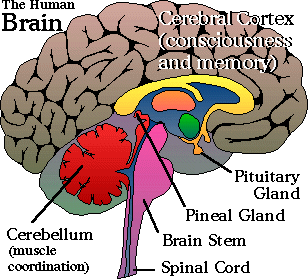

The brain is the center of the nervous system in all vertebrate and most invertebrate animals - only a few primitive invertebrates such as sponges, jellyfish, sea squirts and starfishes do not have one. It is located in the head, usually close to primary sensory apparatus such as vision, hearing, balance, taste and smell. The brain of a vertebrate is the most complex organ in its body.
In a typical human the cerebral cortex (the largest part) is estimated to contain 15-33 billion neurons, each connected by synapses to several thousand other neurons. These neurons communicate with one another by means of long protoplasmic fibers called axons, which carry trains of signal pulses called action potentials to distant parts of the brain or body targeting specific recipient cells.
From an evolutionary-biological point of view, the function of the brain is to exert centralized control over the other organs of the body. The brain acts on the rest of the body either by generating patterns of muscle activity or by driving secretion of chemicals called hormones.
This centralized control allows rapid and coordinated responses to changes in the environment. Some basic types of responsiveness such as reflexes can be mediated by the spinal cord or peripheral ganglia, but sophisticated purposeful control of behavior based on complex sensory input requires the information-integrating capabilities of a centralized brain.
From a philosophical point of view, what makes the brain special in comparison to other organs is that it forms the physical structure that generates the mind. As Hippocrates put it: "Men ought to know that from nothing else but the brain come joys, delights, laughter and sports, and sorrows, griefs, despondency, and lamentations."
In the early part of psychology, the mind was thought to be separate from the brain. However, after early scientists conducted experiments it was determined that the mind was a component of a functioning brain that expressed certain behavior based on the external environment and the development of the organism.
The mechanisms by which brain activity gives rise to consciousness and thought have been very challenging to understand: despite rapid scientific progress, much about how the brain works remains a mystery. The operations of individual brain cells are now understood in considerable detail, but the way they cooperate in ensembles of millions has been very difficult to decipher. The most promising approaches treat the brain as a biological computer, very different in mechanism from electronic computers, but similar in the sense that it acquires information from the surrounding world, stores it, and processes it in a variety of ways.
This article compares the properties of brains across the entire range of animal species, with the greatest attention to vertebrates. It deals with the human brain insofar as it shares the properties of other brains. The ways in which the human brain differs from other brains are covered in the human brain article.
Several topics that might be covered here are instead covered there because much more can be said about them in a human context. The most important is brain disease and the effects of brain damage, covered in the human brain article because the most common diseases of the human brain either do not show up in other species, or else manifest themselves in different ways by neurologists and psychiatrists.

When you drop a small stone in water, you see waves. Similarly our heart and our brain have wave patterns. The wave pattern of the heart is measured by ECG (electro cardiograph). The brain waves are measured by EEG (electro encephalograph).
Using the brain wave studies, scientists have discovered that our brain waves are of four types.
The brain waves also have peaks that are similar to the peaks we see in water waves. The number of times the peak appears in one second is called "cycles per second". For example, the electricity in India is of 50 cycles per second.
This brain wave indicates that your conscious mind is in control. It indicates a mental state of logical thought, analysis, and action. You are alert and awake talking, speaking, doing, solving problems, etc.
This brain wave indicates relaxation and meditation. It is a state of relaxed alertness good for inspiration, learning facts fast.
Deep meditation. This is associated with life-like imagination. This is best for suggestibility and inspiration. This brain wave is dominant in children of age 2 to 5.
Deep dreamless sleep. Deep relaxation.
Alpha, beta, theta: What are brain states and brain waves? And can we control them? Medical Express - December 25, 2023
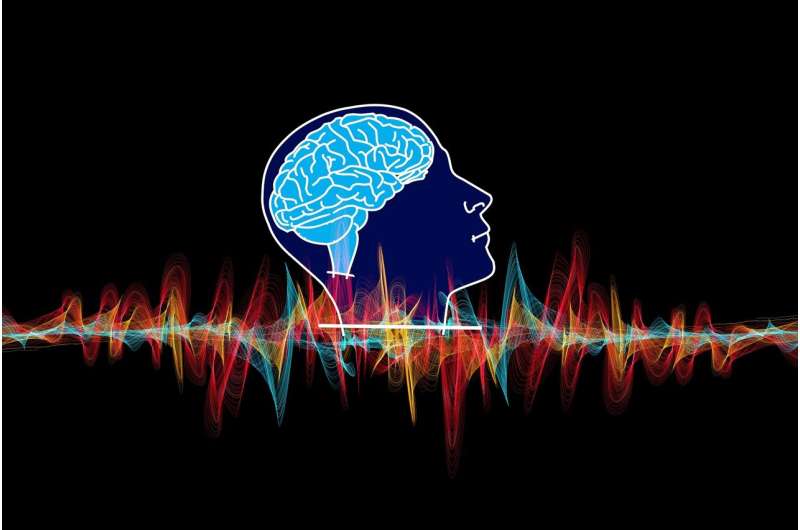
Currently, no single approach to imaging or measuring brain activity gives us the whole picture. What we "see" in the brain depends on which tool we use to "look." There are myriad ways to do this, but each one comes with trade-offs.
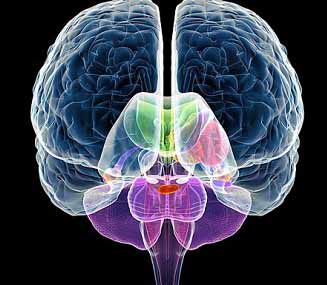
Usually the left brain and the right brain waves are independent. They reach peaks independent of each other. During meditation and deep relaxation, the left brain waves and the right brain waves happen together. For both, the peaks are reached together. This is called synchronization. Scientists now believe that synchronization makes much greater mind power available. This is associated with learning large amounts of information very quickly as well as with creativity.
Scientists had long believed that brain activity such as brain waves and secretion of brain chemicals were beyond conscious control. But, experiments on Swami Rama of the Himalayas and biofeedback have changed that belief. Now it is now proven that some people can control their brain waves.
The brain is computer - an electrochemical machine - that processes through binary code - zeroes and ones that create patterns of experiences and realities.
Reality is a consciousness simulation, hologram, illusion, dream created by digital codes. Numbers, numeric codes, and algorithms define our existence and experiences.
Human DNA processes through digital codes at specific times and frequencies to experience physical reality. Those codes awaken the mind to the change and evolution of consciousness.
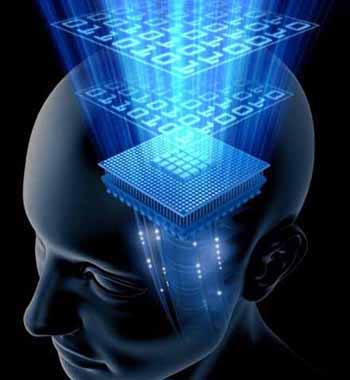
The illusion of physical reality is created by the patterns of the
Fibonacci Sequence - the Golden Spiral of Consciousness
consisting of zeros and ones that align with the grids.

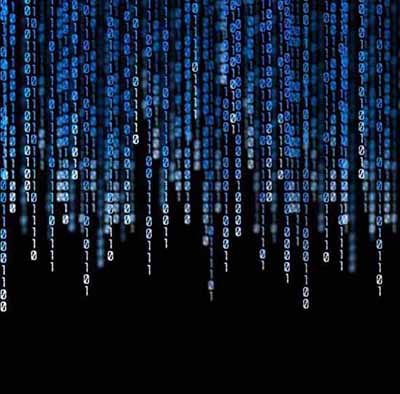
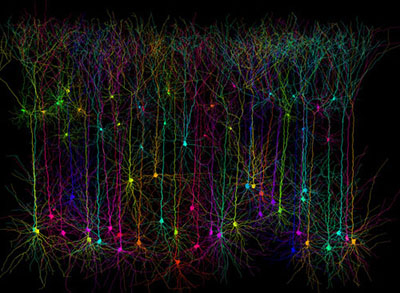
The brain may be an even more powerful computer than before thought - microscopic branches of brain cells that were once thought to basically serve as mere wiring may actually behave as minicomputers, researchers say. The most powerful computer known is the brain. The human brain possesses about 100 billion neurons with roughly 1 quadrillion - 1 million billion - connections known as synapses wiring these cells together. Neurons each act like a relay station for electrical signals. The heart of each neuron is called the soma - a single thin cable-like fiber known as the axon that sticks out of the soma carries nerve signals away from the neuron, while many shorter branches called dendrites that project from the other end of the soma carry nerve signals to the neuron.
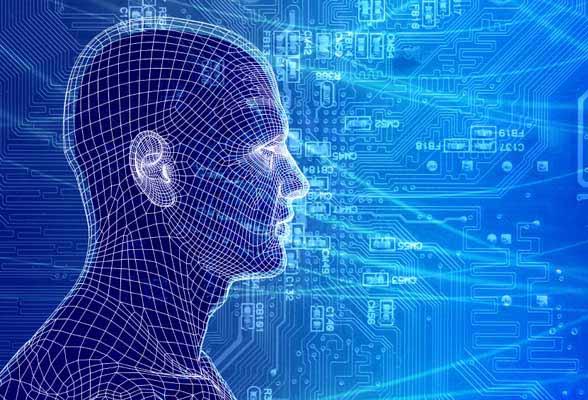
Reality as a Simulation, Illusion of Time, Quantum Mechanics, Multiverse